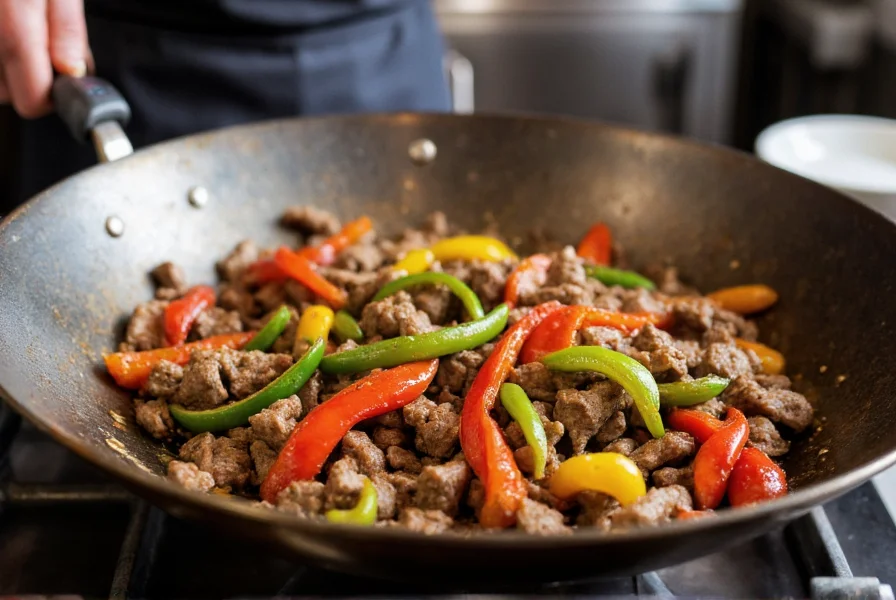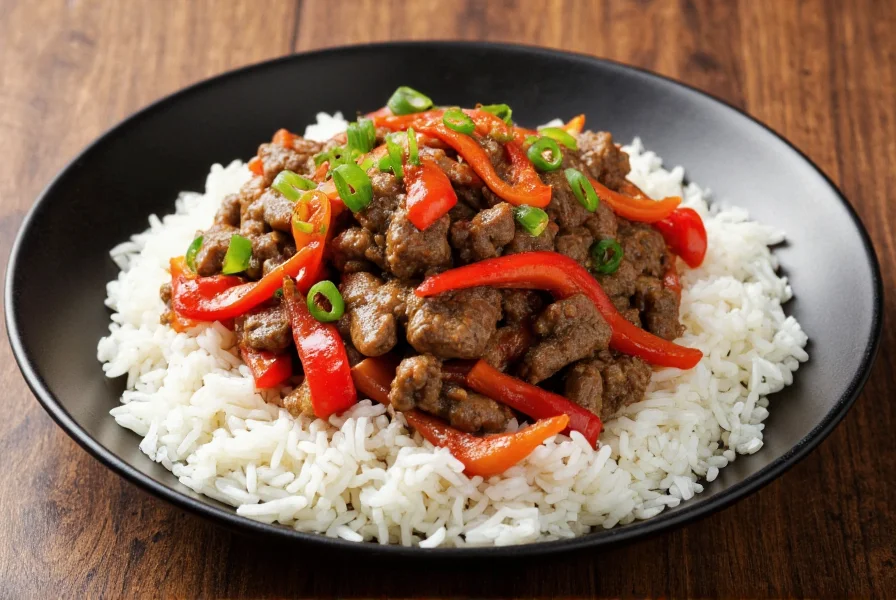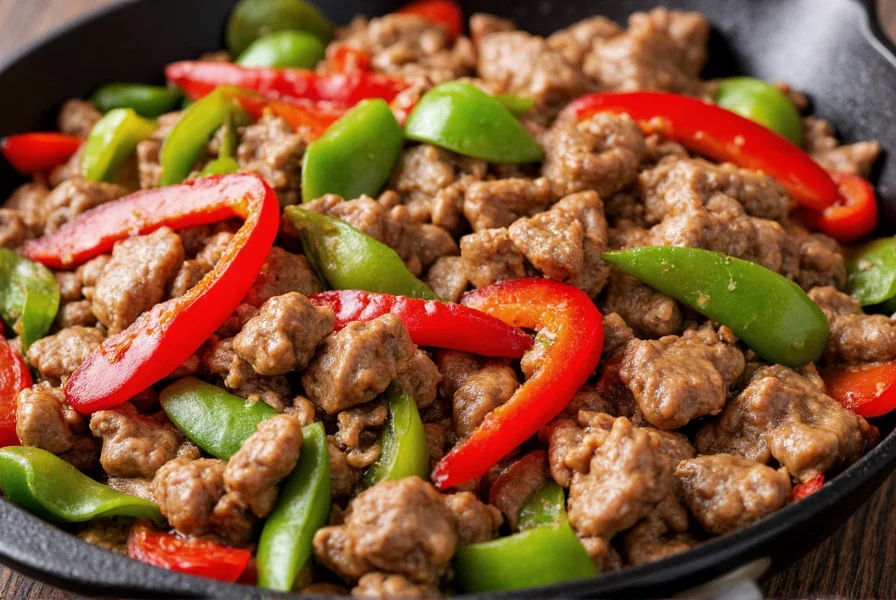Creating the perfect pepper beef stir fry requires understanding the balance of ingredients, proper technique, and timing. This beloved dish has become a staple in Chinese-American cuisine, offering a quick yet satisfying meal that combines protein, vegetables, and complex flavors in one wok. Whether you're a beginner or looking to refine your technique, mastering this dish opens the door to authentic stir-fry cooking.
Essential Ingredients for Authentic Pepper Beef Stir Fry
The quality of your ingredients directly impacts the final dish. For authentic pepper beef stir fry, select these key components:
| Ingredient | Why It Matters | Pro Tip |
|---|---|---|
| Flank steak or sirloin | These cuts provide ideal texture when sliced against the grain | Partially freeze meat for easier, thinner slicing |
| Fresh bell peppers | Vibrant colors and crisp texture essential to the dish | Use red, yellow, and green peppers for visual appeal |
| Garlic and ginger | Foundation of authentic Chinese stir-fry flavor profile | Minced fresh works better than powdered versions |
| Dark soy sauce | Adds depth and rich color without excessive saltiness | Combine with light soy sauce for balanced flavor |
Equipment That Makes a Difference
While you can make pepper beef stir fry in a regular skillet, authentic results come from proper equipment:
- Carbon steel wok - Heats quickly and evenly, essential for proper stir-frying
- Wok spatula - Curved design perfect for tossing ingredients
- High-heat cooking oil - Peanut or avocado oil with high smoke points
- Mandoline slicer - Ensures consistent, thin meat and vegetable slices

Step-by-Step Preparation Guide
The secret to restaurant-quality pepper beef stir fry at home lies in proper preparation and execution:
Marinating the Beef
Begin by slicing your beef against the grain into thin strips (⅛ inch thick). Combine with:
- 2 tablespoons soy sauce
- 1 tablespoon rice wine or dry sherry
- 1 teaspoon cornstarch
- 1 teaspoon sesame oil
- ½ teaspoon baking soda (optional, for extra tenderness)
Let the beef marinate for 15-20 minutes while you prepare other ingredients. This simple marinade creates a protective layer that keeps the beef tender during high-heat cooking.
Preparing the Sauce
Mix together:
- 3 tablespoons low-sodium soy sauce
- 2 tablespoons oyster sauce
- 1 tablespoon rice vinegar
- 1 tablespoon brown sugar
- 1 teaspoon sesame oil
- 1 tablespoon cornstarch
- ¼ cup beef broth or water
The cornstarch in the sauce creates that signature glossy coating that clings perfectly to the beef and peppers.
Mastering the Stir-Fry Technique
Traditional stir-frying requires specific technique to achieve the wok hei (breath of the wok) that defines authentic Chinese cooking:
- Heat your wok until smoking hot - This prevents ingredients from sticking and ensures proper searing
- Cook in batches - Overcrowding lowers the temperature and causes steaming instead of stir-frying
- High heat throughout - Maintain maximum heat for the entire cooking process
- Constant motion - Keep ingredients moving to ensure even cooking without burning
- Sequence matters - Cook aromatics first, then meat, then vegetables, finishing with sauce
For perfect pepper beef stir fry, cook the beef in two batches. Remove the first batch when 70% cooked, then return it to the wok when adding the sauce to finish cooking. This prevents overcooking while allowing flavors to meld.
Avoiding Common Pepper Beef Stir Fry Mistakes
Even experienced home cooks make these critical errors when preparing pepper beef stir fry:
- Using the wrong cut of meat - Tough cuts like chuck won't tenderize properly with quick cooking
- Not slicing against the grain - This makes the beef chewy regardless of cooking method
- Over-marinating the beef - More than 30 minutes can make the texture mushy
- Adding cold ingredients to the wok - This dramatically lowers the temperature
- Using bell peppers with high water content - Causes steaming instead of stir-frying
- Stirring too slowly - Ingredients should be in constant motion during cooking
Variations for Different Dietary Preferences
While traditional pepper beef stir fry follows a specific formula, these adaptations maintain authenticity while accommodating different needs:
- Gluten-free version - Substitute tamari for soy sauce and ensure oyster sauce is GF
- Low-sodium option - Use reduced-sodium soy sauce and increase rice vinegar for balance
- Spicy pepper beef stir fry - Add 1-2 sliced red chilies with the garlic and ginger
- Vegetarian alternative - Replace beef with extra-firm tofu and use mushroom broth
- Simplified weeknight version - Use pre-sliced beef from the grocery store (check quality)

Serving and Storage Recommendations
For the best pepper beef stir fry experience:
- Serve immediately over steamed jasmine or basmati rice
- Garnish with sliced green onions and sesame seeds
- Pair with a light vegetable side like steamed bok choy
- Store leftovers in an airtight container for up to 3 days
- Reheat in a wok or skillet rather than microwave to maintain texture
When reheating, add a splash of water or broth to revive the sauce consistency. The cornstarch-based sauce may thicken when refrigerated, so additional liquid helps restore the proper texture.











 浙公网安备
33010002000092号
浙公网安备
33010002000092号 浙B2-20120091-4
浙B2-20120091-4